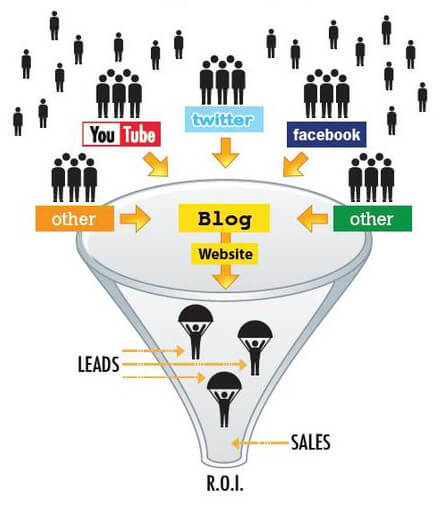In the U.S. it has been an established reality for quite some time, while in Italy few people are still familiar with its exact meaning.In reality, there is nothing overly revolutionary to understand about the mechanism of social selling.
It is a modern take on the classic sales process that necessarily involves research and subsequent customer involvement. So far the theory. Because then in practice everything gets complicated.
Through Social Selling you use social to increase your contacts and find new potential customers: no longer the classic sales tools, but social networks as a catchment area from which to draw.
In the U.S. as mentioned above, Social Selling is an established reality to the point that 61 percent of salespeople use social media for their business, specifically especially for the process of contact acquisition. Yes because with Social Selling you are going to use classic socials such as LinkedIn, Facebook, Twitter, Pinterest etc… to make yourself known and create a strong brand, so-called brand building.
This must be said, it is only the first step of the journey because once you create a strong and reliable brand you then need to sell; but we will see this step later. Returning to the initial phase of Social Selling, that is, the phase based on using social to find and engage the potential customer, this is, as mentioned above, a 2.0 reinterpretation of what has always been the case with sales.
The ‘social’ dimension was present even before the advent of Facebook &co.; it used to happen directly, through interaction, perhaps by asking advice from those who had already tested a product. That was also a way of getting information and growing a brand. Today this has moved to social, and for some, now, years companies have been taking their process of customer research and engagement on social networks, increasingly implemented throughout the sales process.
Acquire customer information through social networks
The focus of the entire talk is simple: acquire as much information as possible about customers. Through social media, of course. Get to know potential customers, understand what they are looking for or what they would like. And it is a mechanism that works not only from a B2C perspective, but also from a B2B perspective. Still looking at the U.S. world, about 80 percent of B2B companies are active on LinkedIn, the social network point of reference for business: on social moved what for years had been done through business meetings, industry-specific conferences, etc… this allowed a significant increase in relationship networks. As much between companies as between companies and customers.
Having finished this step, the more complicated one then begins: the actual sale. Which has critical points related to the social essence. Because selling on social media always risks being perceived as spam or otherwise frowned upon. Therefore, it is important to understand when it is time to invite the customer to purchase and how to do it: always in a ‘soft‘ way and without giving the impression of excessive intrusiveness.
This, too, depends, as can be easily guessed, on the starting element; that is, the strength we have been able to give to our brand. The stronger the brand, the more we can push ourselves in asking the customer to make the purchase.
The use of social networks is therefore increasingly at the basis of an effective online sales process: with all the pros and cons of the case, as on the other hand with every new innovation introduced by the network.

